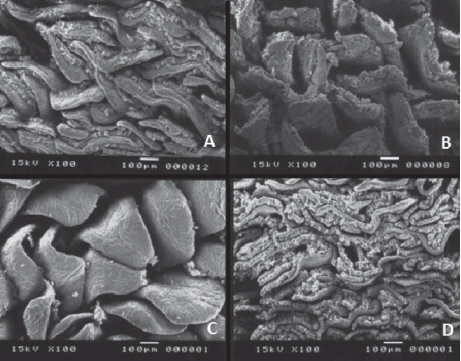



Influence of Chlorine Added to Drinking Water During the Preslaughter Feed Withdrawal on Microbiology and Morphology of the Broiler Gastrointestinal Tract
Chlorine added to drinking water for broilers during the feed withdrawal period reduced the numbers of microorganisms in the crops but did not damage the intestinal mucosa, according to new research from Brazil.In the journal, Poultry Science, F.R. Barreiro and co-authors at Universidade Estadual Paulista in Jaboticabal, Brazil, report an experiment to test the effects of the addition of chlorine to broiler drinking water during a 12-hour pre-slaughter feed withdrawal period on reduction of the quantities of microorganisms, such as Escherichia coli and enterococci, in broiler crops and caeca.
Reduction of these microorganisms would likely also reduce contamination of broiler meat by pathogenic bacteria during processing, the researchers explain. They also investigated whether the chlorine caused intestinal damage that could disseminate the microorganisms to
the carcass.
A total of 40 Cobb male broilers were used. Samples of crop and caecal content were collected for microbiological analysis, and duodenum and jejunum were used for morphological analysis from 10 birds in each treatment.
The most probable number (MPN) of E.coli and enterococci in the collected samples of crop and caeca and the measure of the free residual chlorine in water were determined.
The scanning electron microscopy from duodenum and jejunum was used to illustrate the mucosa integrity.
The salt of dichloro isocyanuric acid (Hidroall do Brasil Ltda, Aviclor choque) was used in the drinking water of the 12 hours of feed withdrawal with chlorine addition to water treatment. Chlorine was added at the beginning of the pre-slaughter period. The nipple valve
was pressed with a sterile spatula to collect a water sample in a sterile bottle at the beginning and after the 12-h pre-slaughter period. Free chlorine measurement was performed immediately after sample collection. The concentration of free residual chlorine in the water was 0.052mg per mL at the start and 0.043mg per mL at the end of the pre-slaughter feed withdrawal period.
The chlorine added to water was efficient in reducing the quantities of microorganisms in broiler crops and improved the integrity of the mucosa.


The researchers concluded that pre-slaughter feed withdrawal should be coupled with crop disinfection because pre-slaughter feed withdrawal increases the MPN of enterococci and E. coli in broiler crops. As a result, they added, it presents a higher risk for carcass contamination during slaughterhouse processing and, consequently, a higher risk for public health.
Reference
Barreiro F.R., S.M. Baraldi-Artoni, F.R. Pinto, M.M.C. Barbosa, J.C. Barbosa and L.A. Amaral. 2012. Influence of chlorine added to drinking water during the preslaughter feed withdrawal on microbiology and morphology of the broiler gastrointestinal tract. Poultry Science. 91(11):2778–2784. dx.doi.org/ 10.3382/ps.2012-02455
Further ReadingYou can view the full report by clicking here. |
December 2012








